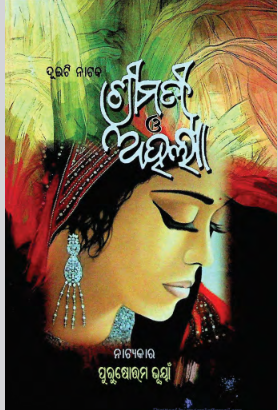Srimati O Ahalya, published in 2015 by Purusottam Bhuyan, is a significant contribution to contemporary Odia drama, weaving together themes of love, identity, and societal norms. The title translates to “Smt. and Ahalya,” introducing us to two women whose lives and struggles are juxtaposed against the backdrop of traditional and modern values. Through incisive dialogue and vivid characterization, Bhuyan invites the audience into a world where the intersecting lives of its characters reveal deep insights into the trials of womanhood and the search for self-identity.
At the heart of the narrative are two central characters: Srimati and Ahalya, each representing distinct aspects of female existence. Srimati embodies the traditional woman who is devoted to her family and rooted in societal expectations. She is portrayed as a caring and nurturing figure, yet her character is not devoid of conflict. Her journey reflects the struggles of women who are often confined by societal roles, emphasizing the intricacies of love, loyalty, and duty. Through Srimati’s experiences, Bhuyan thoughtfully critiques the expectations placed upon women, reflecting on how these pressures often lead to personal sacrifices.
In contrast, Ahalya represents the modern woman striving for independence and self-expression. She challenges traditional boundaries and seeks to carve out her identity outside the confines of acceptable societal norms. Ahalya’s character is marked by her quest for freedom, her struggles against patriarchal limitations, and her desire for love that transcends societal barriers. The play explores Ahalya’s aspirations and the obstacles she faces, capturing the essence of contemporary women’s challenges in a rapidly changing world.
The sub-drama format expertly allows Bhuyan to delve into the themes of duality and the complexities of female relationships. The interactions between Srimati and Ahalya are painted with layers of emotion, revealing the tensions and bonds that exist between women with different worldviews. Their dialogues oscillate between camaraderie and conflict, offering a rich portrayal of feminine solidarity and rivalry. As they navigate their respective journeys, audiences witness moments of empathy, understanding, and confrontation, making the play an exploration of both unity and discord among women.
Bhuyan’s poignant writing captures the cultural and social landscape of Odisha, infusing the narrative with local color and context. The settings, dialogues, and character dynamics reflect the realities of Odia society, making the play relatable and engaging for its audience. Bhuyan’s use of Odia idioms and expressions enhances the authenticity of the dialogue, contributing to a more immersive theatrical experience.
Furthermore, “Srimati O Ahalya” tackles broader themes such as the evolving definitions of love and the quest for selfhood in a patriarchal society. Bhuyan intricately weaves in social commentaries that resonate not only with women but also with men, inviting all members of society to reflect on their roles, responsibilities, and relationships.
In conclusion, “Srimati O Ahalya” is a powerful work that challenges audiences to engage with the complexities of female identity and the societal structures that shape it. Purusottam Bhuyan’s deft storytelling and rich characterizations create a captivating exploration of women’s struggles and triumphs, making this drama a poignant reflection of the contemporary Odia social landscape. Through the lens of Srimati and Ahalya, the play speaks volumes about the resilience of women and their unyielding spirit in the face of adversity
Books Info
| Books name | Srimati O Ahalya |
| Author | Purusottam Bhuyan |
| No Of pages | 153 |
| Publisher | Rahasmani Bhuyan |
| Publication | 2015 |
| Printed At | Raghunath Offset |
| Distributor | NA |

